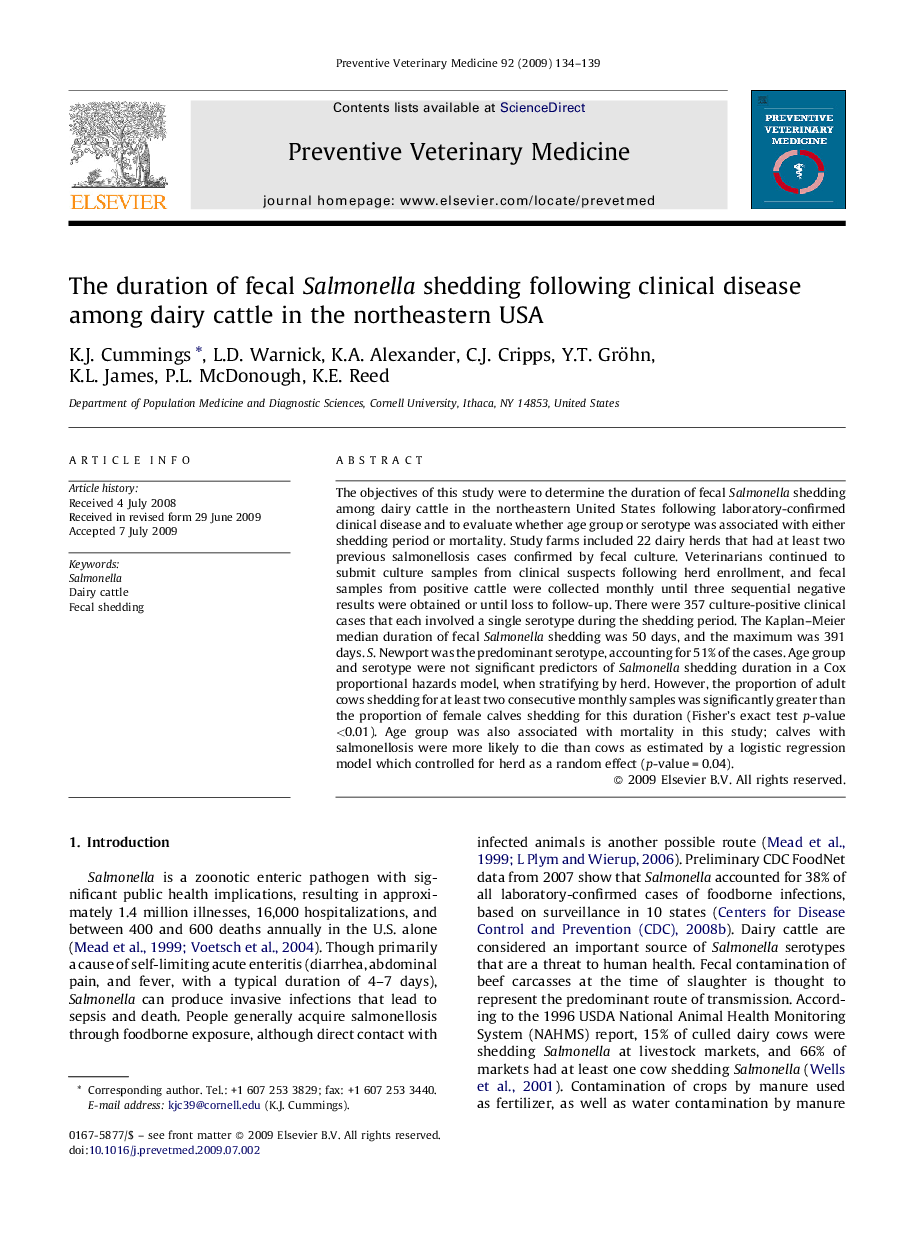| Article ID | Journal | Published Year | Pages | File Type |
|---|---|---|---|---|
| 2453033 | Preventive Veterinary Medicine | 2009 | 6 Pages |
The objectives of this study were to determine the duration of fecal Salmonella shedding among dairy cattle in the northeastern United States following laboratory-confirmed clinical disease and to evaluate whether age group or serotype was associated with either shedding period or mortality. Study farms included 22 dairy herds that had at least two previous salmonellosis cases confirmed by fecal culture. Veterinarians continued to submit culture samples from clinical suspects following herd enrollment, and fecal samples from positive cattle were collected monthly until three sequential negative results were obtained or until loss to follow-up. There were 357 culture-positive clinical cases that each involved a single serotype during the shedding period. The Kaplan–Meier median duration of fecal Salmonella shedding was 50 days, and the maximum was 391 days. S. Newport was the predominant serotype, accounting for 51% of the cases. Age group and serotype were not significant predictors of Salmonella shedding duration in a Cox proportional hazards model, when stratifying by herd. However, the proportion of adult cows shedding for at least two consecutive monthly samples was significantly greater than the proportion of female calves shedding for this duration (Fisher's exact test p-value <0.01). Age group was also associated with mortality in this study; calves with salmonellosis were more likely to die than cows as estimated by a logistic regression model which controlled for herd as a random effect (p-value = 0.04).
